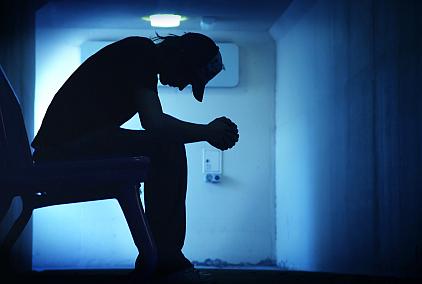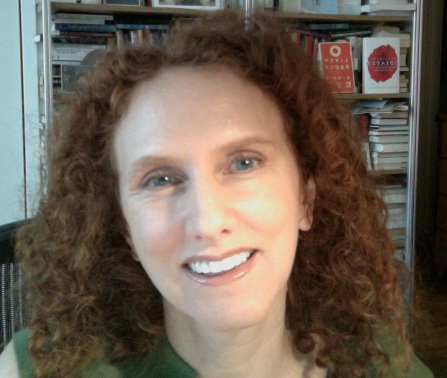Q&A with Maia Szalavitz, Part 2: Understanding Addiction Through Science — and Personal Experience

Maia Szalavitz, Time health writer and author, talked with Antidote last week about how the media covers pain treatment. She also mentioned that she, too, had struggled with addiction. Antidote asked her about that, about the numbers often used to define the scope of the pain problem, and about tools reporters can use to better cover the issue.
The first part of our email interview ran Friday. The second part is below. It has been edited for space and clarity.
Q: When you say that you are an ex-addict, what do you mean by that? Were you addicted to opioids or something else? And how did you overcome your addiction?
 A: I was addicted to heroin and cocaine, and, yes, IV heroin was my drug of choice. That was in the 1980s, when I was at Columbia (University) as an undergraduate. Basically, I was socially clueless and drugs helped me cope. I was briefly on methadone, but for several reasons (lousy program, low dose, living with a cocaine dealer, perhaps the drug doesn't agree with me), it didn't help me. Then, I did your traditional 28-day, 12-step based rehab and attended 12-step groups pretty much daily for about seven years. Never relapsed, but as I approach my 24th anniversary, I haven't been to a meeting in years. I discovered at around the time I stopped going to meetings that my underlying problem was depression and when that was treated effectively with medication, I wasn't the clingy, constant-support-needing mess I was without it. But while I have some issues with some claims made by 12-steppers, I did find a lot of help there.
A: I was addicted to heroin and cocaine, and, yes, IV heroin was my drug of choice. That was in the 1980s, when I was at Columbia (University) as an undergraduate. Basically, I was socially clueless and drugs helped me cope. I was briefly on methadone, but for several reasons (lousy program, low dose, living with a cocaine dealer, perhaps the drug doesn't agree with me), it didn't help me. Then, I did your traditional 28-day, 12-step based rehab and attended 12-step groups pretty much daily for about seven years. Never relapsed, but as I approach my 24th anniversary, I haven't been to a meeting in years. I discovered at around the time I stopped going to meetings that my underlying problem was depression and when that was treated effectively with medication, I wasn't the clingy, constant-support-needing mess I was without it. But while I have some issues with some claims made by 12-steppers, I did find a lot of help there.
I used to rely on my personal experience to say "methadone doesn't work and the 12 steps are the best way." Now, I know that the data shows that maintenance with methadone and buprenorphine (Suboxone) saves lives more effectively (cuts disease and overdose) than any other treatment for opioid addiction. While the 12-step programs can be helpful for many, they are definitely not the one true way.
Addiction is a complicated problem: for one, most addicted women (and at least half of all addicts) have an underlying mental illness that needs effective treatment, which will vary by the nature of the problem. It's not "equal opportunity" (affects the poor and unemployed at much higher rates): in fact, a college education (despite the fact that people drink and use heavily during college) is one of the best antidotes to addiction that we know. Meaningful work is another. However, giving job training meant for high school dropouts to an MD or antidepressants to a person whose problem is schizophrenia, or 12-step-only treatment to a militant atheist and skeptic are obviously not effective ways of dealing with the problem. Nonetheless, most of our treatment remains one size fits all, despite claims to the contrary, and requires 12-step involvement.
Q: The actual number of people suffering from chronic pain seems hard to pin down. I have seen ranges from 25% of the population to 50%. What is your sense of the true number and how those estimates are actually made?
A: This is a very difficult question to answer, but I do think that chronic pain is not rare and the prevalence clearly increases with age. What matters here is not so much the number but how disabling the pain is and what people's options for dealing with it are.
Q: Let's assume for the sake of argument that 1 of every 4 Americans really does suffer from chronic pain. I did a little poll with a group of friends and colleagues recently and found just 1 in 20 suffered from chronic pain. This was a person who had recently suffered a sports-related injury. On its face, does that 1 in 4 number seem high to you?
A: It does seem high, but again, it seems to me what matters is whether pain is interfering with function and whether people are able to enjoy their families and work. I also think that prevalence is probably seriously higher in the lower economic strata. Again, it also increases with age, and I'm guessing you had an upper middle class sample that probably skewed young?
Q: Obviously my little query of my social circle is far from scientific, but it actually skewed a little old. It was all with people aged 25 to 70, and most were over 40. I do understand your point, though, which makes me wonder about the idea that cracking down on painkiller mills actually makes it harder for legitimate patients to get access to opioids. What is the best evidence you have seen to prove that is actually occurring?
A: Sadly, there is no good data on this and it's not something that researchers tend to study. Perhaps such research is something the proponents of the crackdown should fund: the only other people who might fund it are (in) pharma or have pharma links, and then it would be dismissed. Huge numbers of anecdotes are easily found, however- look first to the comments section of any article on the crackdown, where there are always at least one or two poignant stories of suffering patients. Radley Balko actively recruited such people when covering this story for the Huffington Post - he soon had more than 300 stories.
Q: You mention drug warriors, and I agree that reporters too often take their talking points from law enforcement instead of questioning some of their assumptions and pronouncements. What would be your guidance for reporters receiving a new, annual update on drug abuse in a state or nationwide?
A: Think critically! Remember when you smoked pot (and statistically, let's be real: odds are that you did, like more than half the adult population). Remember how wrong the information you received from authorities was about it? Do not use law enforcement people as sources for information about drug effects or pharmacology or addiction or epidemiology. They aren't experts in this.
Both law enforcement and community based treatment providers are prone to a bias known as the "clinician's error." What this means is that people who come to them are people in trouble: they aren't the vast majority of drug users. The vast majority of drug users are like you when you smoked pot in college and engaged in binge drinking: they get over it without treatment. People tend to think if they did drugs and didn't have a problem that they are the "exceptions" and that they were "lucky." The reality is that they are the rule, and addicts are the exception. This doesn't mean that addiction isn't a problem, but if we focus only on the pathology, we're not going to understand what goes wrong in people with problems since we won't know what goes right for those who are resilient.
Most people get over their drug use without treatment or self-help groups, even addicts. This is why epidemiology of non-treatment samples is important. These people aren't typically seen by the police or by treatment providers, who assume that the people they do see are examples of "what drugs do." This is like looking at skid row and saying this is what drinking looks like. It's true, but it's not representative.
Also, don't be the readers' nanny or parent. You aren't there to "send the right message" - and show that "drugs are bad." That may be what the government wants you to do, but it's not your job. We need to ask questions like why our marijuana policy is so out of line with the data and think critically about conventional wisdom like "prescription drugs are as dangerous as street drugs." If that were true, we wouldn't need the FDA. Yes, Oxycontin is as addictive as heroin, but at least you actually know the dose contained in each pill. Also, you can be reasonably assured that the drug is the same in every dose and not "cut" with random fillers. We need to ask tough questions, challenge conventional wisdom and not assume that our assumptions about drugs and addictions are correct.
Every time, use PubMed and Google, and find out what the research actually shows on the most basic questions, like what proportion of users get hooked and what addiction is. You will get a better story because it won't be the one you have written 20 times before, and it will actually be closer to the reality.
You can also email me: maiasz@gmail.com I do my best to answer reporters' queries and provide background on the research as a whole and source info on addictions and drug policy because there is so much misinformation out there.
Related Posts:
Q&A with Maia Szalavitz: Going Beyond Victims and Pushers for Pain Stories

